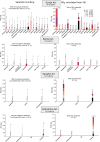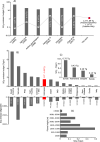Modest volcanic SO2 emissions from the Indonesian archipelago
- PMID: 35690615
- PMCID: PMC9188567
- DOI: 10.1038/s41467-022-31043-7
Modest volcanic SO2 emissions from the Indonesian archipelago
Abstract
Indonesia hosts the largest number of active volcanoes, several of which are renowned for climate-changing historical eruptions. This pedigree might suggest a substantial fraction of global volcanic sulfur emissions from Indonesia and are intrinsically driven by sulfur-rich magmas. However, a paucity of observations has hampered evaluation of these points-many volcanoes have hitherto not been subject to emissions measurements. Here we report new gas measurements from Indonesian volcanoes. The combined SO2 output amounts to 1.15 ± 0.48 Tg/yr. We estimate an additional time-averaged SO2 yield of 0.12-0.54 Tg/yr for explosive eruptions, indicating a total SO2 inventory of 1.27-1.69 Tg/yr for Indonesian. This is comparatively modest-individual volcanoes such as Etna have sustained higher fluxes. To understand this paradox, we compare the geodynamic, petrologic, magma dynamical and shallow magmatic-hydrothermal processes that influence the sulfur transfer to the atmosphere. Results reinforce the idea that sulfur-rich eruptions reflect long-term accumulation of volatiles in the reservoirs.
© 2022. The Author(s).
Conflict of interest statement
The authors have no competing interests.
Figures





References
-
- Oppenheimer, C. 3.04—Volcanic Degassing. In Treatise on Geochemistry (eds. Holland, H. D. & Turekian, K. K.) 123–166 (Pergamon, 2003). 10.1016/B0-08-043751-6/03020-6.
-
- Grainger RG, Highwood EJ. Changes in stratospheric composition, chemistry, radiation and climate caused by volcanic eruptions. Geol. Soc. Lond. Spec. Publ. 2003;213:329–347. doi: 10.1144/GSL.SP.2003.213.01.20. - DOI
-
- Clarisse L, et al. Retrieval of sulphur dioxide from the infrared atmospheric sounding interferometer (IASI) Atmos. Meas. Tech. 2012;5:581–594. doi: 10.5194/amt-5-581-2012. - DOI
-
- McGonigle AJS. Volcano remote sensing with ground-based spectroscopy. Philos. Trans. R. Soc. Math. Phys. Eng. Sci. 2005;363:2915–2929. - PubMed
LinkOut - more resources
Full Text Sources
Miscellaneous

